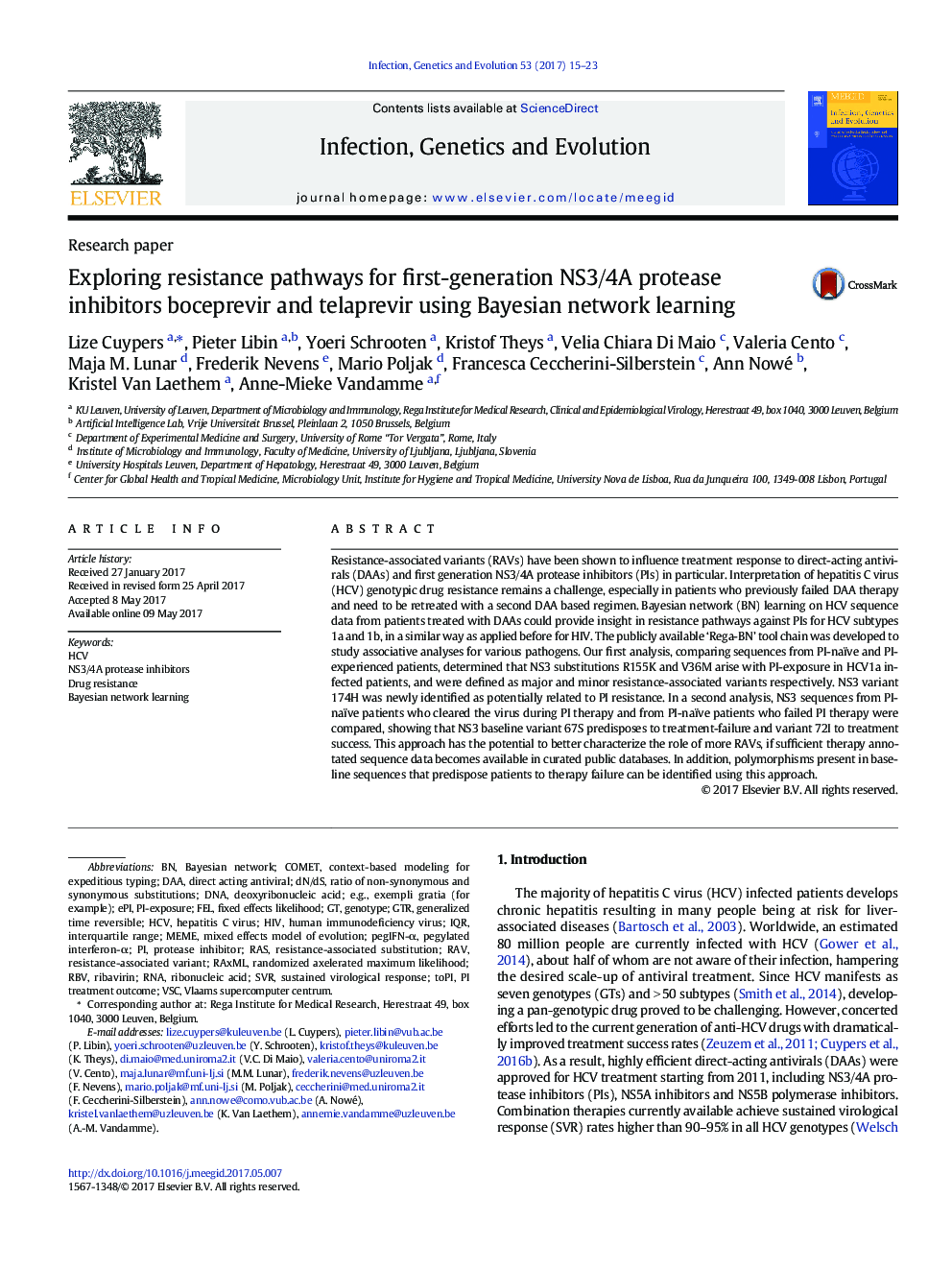| کد مقاله | کد نشریه | سال انتشار | مقاله انگلیسی | نسخه تمام متن |
|---|---|---|---|---|
| 5590656 | 1570150 | 2017 | 9 صفحه PDF | دانلود رایگان |
عنوان انگلیسی مقاله ISI
Exploring resistance pathways for first-generation NS3/4A protease inhibitors boceprevir and telaprevir using Bayesian network learning
دانلود مقاله + سفارش ترجمه
دانلود مقاله ISI انگلیسی
رایگان برای ایرانیان
کلمات کلیدی
DAABayesian network learningVSCRAxMLMEMEresistance-associated variantGTRRAVPegIFN-αpegylated interferon-αe.g.RBVEPIIQRRASSVRdN/dS - DN / DSDNA - DNA یا اسید دزوکسی ریبونوکلئیکFEL - UPfixed effects likelihood - اثرات ثابت اثراتdeoxyribonucleic acid - اسید deoxyribonucleicribonucleic acid - اسید ریبونوکلئیکRNA - اسید ریبونوکلئیکresistance-associated substitution - تعویض مربوط به مقاومتtopi - توپcomet - دنباله دارRibavirin - ریباویرین Bayesian network - شبکه بیزی، شبکه بیزینinterquartile range - محدوده بین محدبmixed effects model of evolution - مدل اثرات مخلوط تکاملdirect acting antiviral - مستقیم ضد ویروسی عملDrug resistance - مقاومت داروییProtease inhibitor - مهارکننده پروتئازHepatitis C virus - هپاتیت سیHCV - هپاتیت سیhuman immunodeficiency virus - ویروس نقص ایمنی انسانیHIV - ویروس نقص ایمنی انسانی sustained virological response - پاسخ ویروسی بالقوهGenotype - ژنوتیپ
موضوعات مرتبط
علوم زیستی و بیوفناوری
علوم کشاورزی و بیولوژیک
بوم شناسی، تکامل، رفتار و سامانه شناسی
پیش نمایش صفحه اول مقاله

چکیده انگلیسی
Resistance-associated variants (RAVs) have been shown to influence treatment response to direct-acting antivirals (DAAs) and first generation NS3/4A protease inhibitors (PIs) in particular. Interpretation of hepatitis C virus (HCV) genotypic drug resistance remains a challenge, especially in patients who previously failed DAA therapy and need to be retreated with a second DAA based regimen. Bayesian network (BN) learning on HCV sequence data from patients treated with DAAs could provide insight in resistance pathways against PIs for HCV subtypes 1a and 1b, in a similar way as applied before for HIV. The publicly available 'Rega-BN' tool chain was developed to study associative analyses for various pathogens. Our first analysis, comparing sequences from PI-naïve and PI-experienced patients, determined that NS3 substitutions R155K and V36M arise with PI-exposure in HCV1a infected patients, and were defined as major and minor resistance-associated variants respectively. NS3 variant 174H was newly identified as potentially related to PI resistance. In a second analysis, NS3 sequences from PI-naïve patients who cleared the virus during PI therapy and from PI-naïve patients who failed PI therapy were compared, showing that NS3 baseline variant 67S predisposes to treatment-failure and variant 72I to treatment success. This approach has the potential to better characterize the role of more RAVs, if sufficient therapy annotated sequence data becomes available in curated public databases. In addition, polymorphisms present in baseline sequences that predispose patients to therapy failure can be identified using this approach.
ناشر
Database: Elsevier - ScienceDirect (ساینس دایرکت)
Journal: Infection, Genetics and Evolution - Volume 53, September 2017, Pages 15-23
Journal: Infection, Genetics and Evolution - Volume 53, September 2017, Pages 15-23
نویسندگان
Lize Cuypers, Pieter Libin, Yoeri Schrooten, Kristof Theys, Velia Chiara Di Maio, Valeria Cento, Maja M. Lunar, Frederik Nevens, Mario Poljak, Francesca Ceccherini-Silberstein, Ann Nowé, Kristel Van Laethem, Anne-Mieke Vandamme,